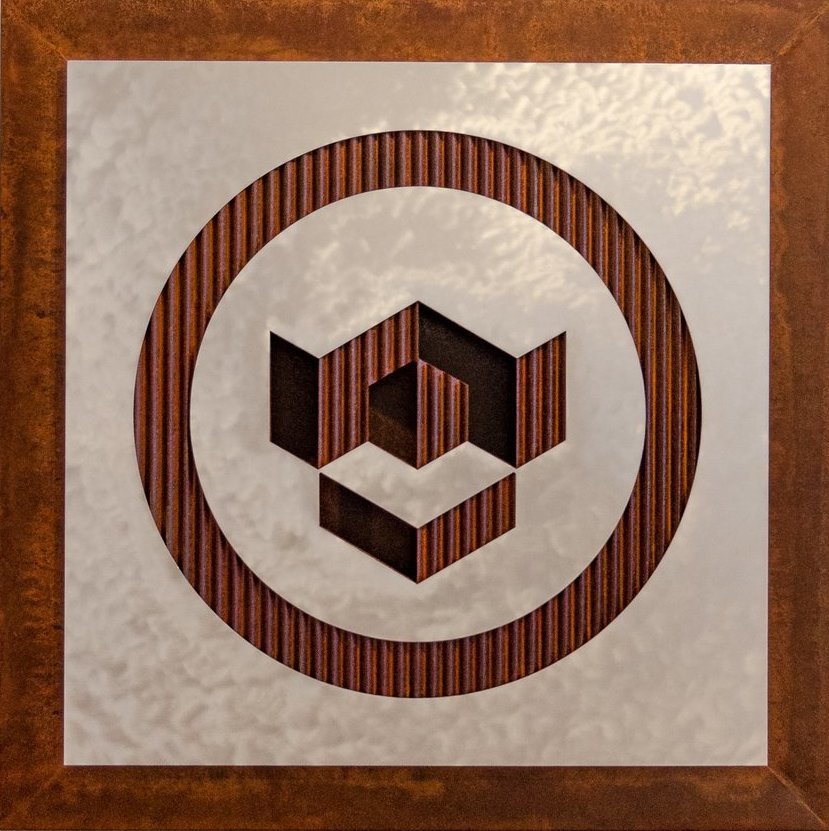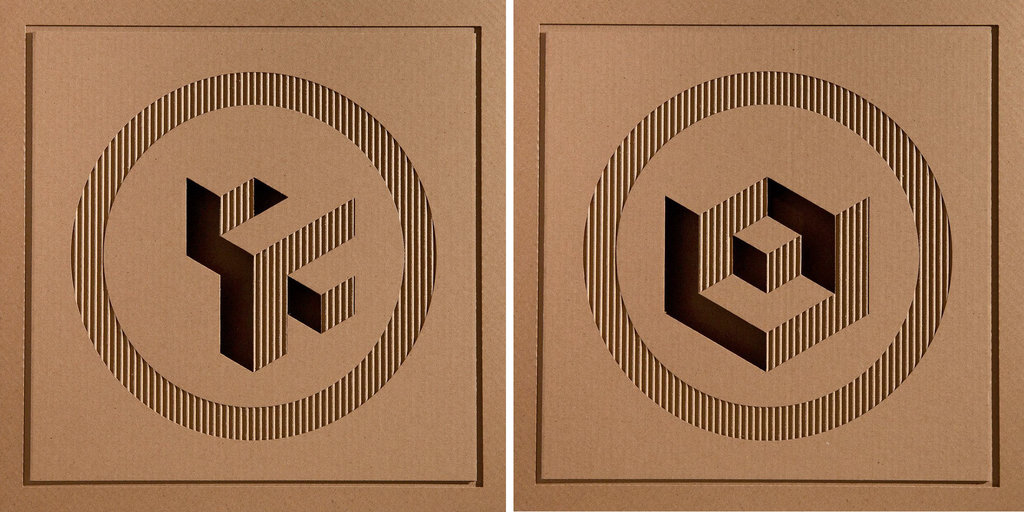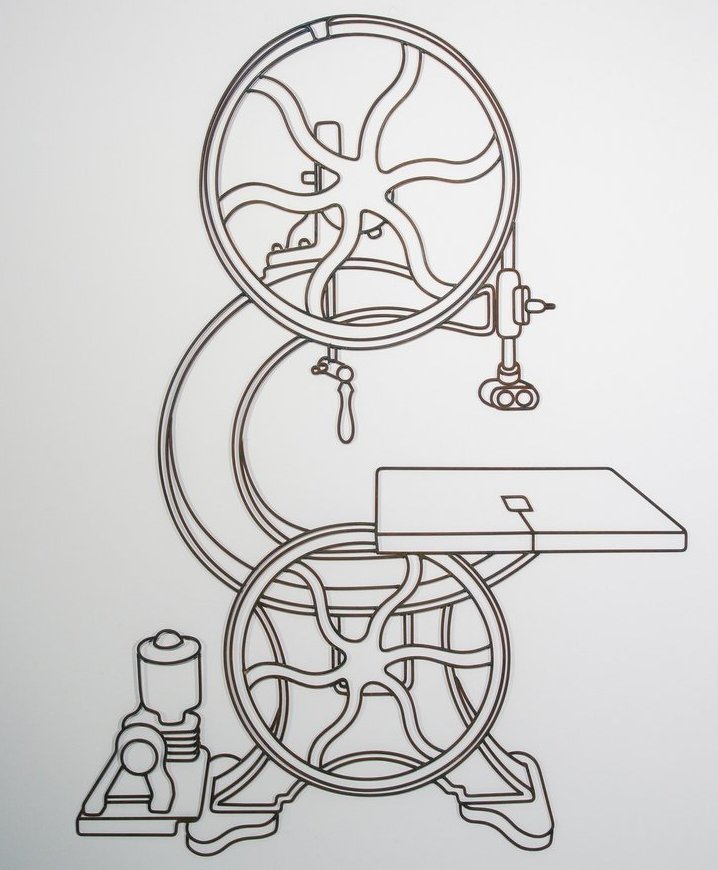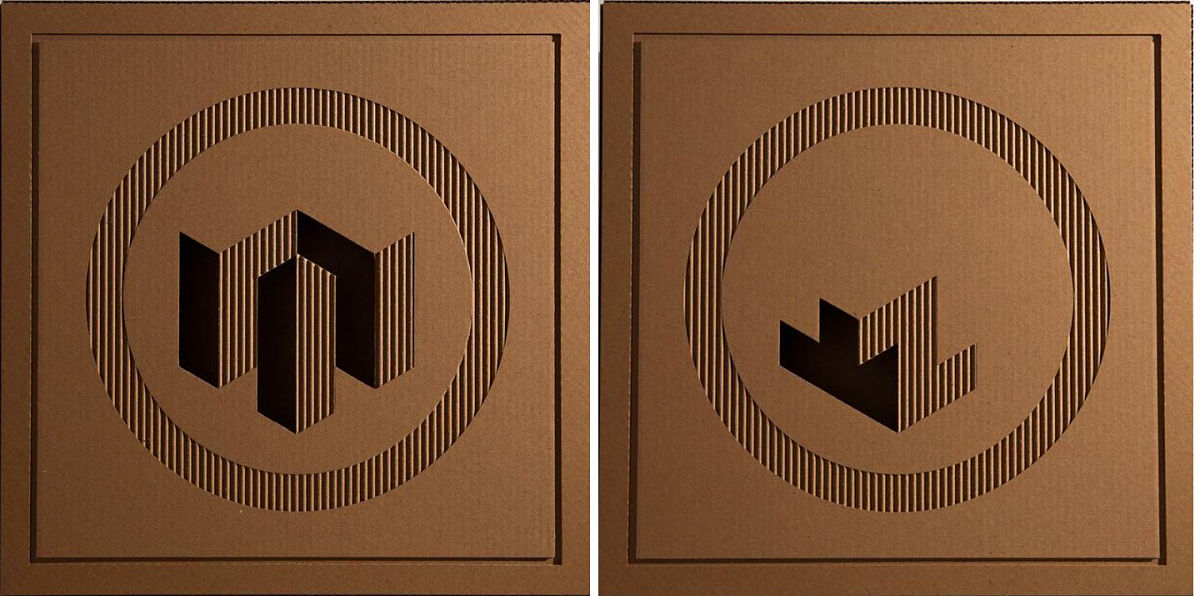Interview with James Maxwell (JM) by Nika Teper (NT)
NT: Evocative negative space is present in your work. In the “Inversion Series” the specific removal of material enables spatial depth. In the “Mechanical Drawing Series” the manipulation of the round steel rod identifies empty space. Can you speak to the interplay between subtraction and addition in creating emphasis? How do you decide what details to include and exclude when creating a iconographic renderings?
JM: Both “Mechanical Drawing” and “Inversions” are born of line drawing. They approach the same problem from different angles. In the “Inversion” series the areas of removal are determined by the isometric hexagonal portrayal of a cube. This system leads to an expansion of space by removing layers of cardboard whereas in “Mechanical Drawings” there is a flattening of the object. There is a constant struggle between object and representation. Subtracting from the cardboard plane and creating pathways with the steel rod take me to the same place. The drawing is the object and the object is the drawing. In regards to the decision making process, I devise a system that allows me to lose myself to an other self that embraces instinct and rejects rationalizations. Sometimes I feel that my best work occurs during lulls between bouts of thinking. It’s exciting when the system begins to collapse. I wanted to initiate the process to see what I could see.
 James Maxwell, M-79, steel and aluminum, 43″ x 43″ x 3″. Courtesy of Elaine Fleck Gallery
James Maxwell, M-79, steel and aluminum, 43″ x 43″ x 3″. Courtesy of Elaine Fleck Gallery
NT: While engaging with substantial materials, your work suggests the drawing processes of illustration and isometric technique. Do you aim to highlight the translation of two dimensional drawing modes into three dimensional objects or is it art as a hybrid?
JM: I see it as a hybrid. Both series are constantly vacillating between 2 and 3 dimensional portrayal. It becomes difficult to see the “object” in “Mechanical Drawing” and it becomes difficult to see the “drawing” in “Inversions.” It’s interesting to see what is constructed in the viewers mind and how, after perceiving one thing, another thing competes for supremacy to the point where we’re not sure what we’re seeing.
NT: In this collection, you present two series of work, one sculptural illustrations of familiar mechanisms and the other allusions to objects and space. Is there a specific dialogue between the two?
JM: There is, in that the cardboard pieces allude to the arena in which the objects in steel compete for our affections.
 James Maxwell, from the Inversion series: C53 (left) and C64 (right), both corrugated cardboard, 19.5″ x 19.5″ x 3″. Courtesy of Elaine Fleck Gallery
James Maxwell, from the Inversion series: C53 (left) and C64 (right), both corrugated cardboard, 19.5″ x 19.5″ x 3″. Courtesy of Elaine Fleck Gallery
NT: The term plasticity as a transformation of material, directly applies to your work. The ability for corrugated cardboard to acquire the qualities of steel and aluminum is most evident upon their comparison. How do you manipulate more ephemeral substances such as shadow and light to transform the material?
JM: The shadows are created by the stripping away of the cardboard; those areas of removal are dictated by the system. The shadows shade the object, creating the inversion space that is portrayed. This inversion is both physical, through the removal of material to the point where the box is turned inside out, and mental, as the object inverts from negative to positive in our minds. I use isometric drawing as a system to accurately represent a single object that will be constructed. Transposing this 2 dimensional method into 3 dimensions creates many things as opposed to one single thing.
With the objects in the “Mechanical Drawing” the shadows create a fuzzy image that makes them appear out of focus. This is somewhat unsettling and invites the viewer to take a closer look. However not everyone enjoys this. A friend of mine who suffers from vertigo couldn’t look at them as it makes him dizzy.
 James Maxwell, Band Saw from the Mechanical Drawing series, round steel rod, H 36″ x W 27″ x D1/8″. Courtesy of Elaine Fleck Gallery
James Maxwell, Band Saw from the Mechanical Drawing series, round steel rod, H 36″ x W 27″ x D1/8″. Courtesy of Elaine Fleck Gallery
NT: Your work, in subject and material, prompts an interesting dynamic between process and product as you thematically and technically address both while the final art form does not function as either. How does your approach to art theoretically fit with your metal design and fabrication business?
JM: Both art and design shape physical and emotional space. Both have their specific fabrication requirements and processes. I’m often confused by the difference between objects, what they are and what they do. Sometimes when working in my studio I find it difficult to tell which is which.
 James Maxwell, from the Inversion series: C83 (left) and C104 (right), both corrugated cardboard, 19.5″ x 19.5″ x 3″. Courtesy of Elaine Fleck Gallery
James Maxwell, from the Inversion series: C83 (left) and C104 (right), both corrugated cardboard, 19.5″ x 19.5″ x 3″. Courtesy of Elaine Fleck Gallery
NT: How do you see yourself experimenting with material, process, product and the resulting artform in future work? Specifically, have you begun engaging with new technical innovations?
JM: Not as yet. I’ve been consumed by the work for my September show at the Elaine Fleck Gallery. Once I come out of my cave and look around I’ll have a better idea of what’s going on.
*Exhibition information: September, 2016, 1351 Queen St. West, Toronto. Gallery hours: Mon, Wed, Thur & Fri: 12 – 6 pm, Sat: 11 am – 6 pm.


Fascinating art and article.
I’m definitely going to check this out.
L